The Ultimate Guide to the Soft Autumn Color Palette

Key Takeaways
- Soft autumn lives in muted warmth and low contrast, so pick soft, earthy hues that meld together and steer clear of harsh black or bright white. Go with a cool, friendly appearance in medium-light to medium-dark values.
- Feature softness as your signature characteristic and warmth as your foundation. Opt for dusty, desaturated hues with golden undertones to bring out your natural glow and harmony.
- Construct your closet on a foundation of warm grays, taupes, camel, soft browns and muted olives. Layer in best colors such as soft peach, warm sage, dusty rose and muted terracotta, then sprinkle in accents like gentle coral or warm mustard.
- Opt for warm, muted hair colors like soft golden brown, cinnamon or caramel. Keep highlights soft and melded with honey or toffee tones to create cohesion.
- Select matte or lightly textured fabrics and soft-edged patterns to complement the palette's understated sophistication. Build up with classic outerwear and knits in core neutrals that mix easily cross-season.
- Keep makeup and accessories soft and warm with peach or rose lips, olive or taupe eyeshadows and warm metals like gold or copper. Try every shade in natural light and modify with the seasons, sampling judiciously from sister palettes but not introducing cool or high-contrast tones.
💫 Learn Seasonal Analysis
Ready to explore the complete seasonal color analysis system? Discover how to identify your seasonal type and unlock the perfect color palette that enhances your natural beauty.
Learn Seasonal Analysis →Soft autumn is a warm muted season with soft low contrast earthy tones and soft depth. It instead leans to warm neutrals, like camel, olive and taupe, with delicate shades of rust, peach and moss.
Skin tends to read warm or neutral-warm, hair is dark blonde to medium brown and eyes are hazel, green or warm brown. To construct ensembles, match fabrics with matte or textured weaves.
The following sections correspond to colors, examples, and quick tips.
📚 Recent Articles
What defines a soft autumn
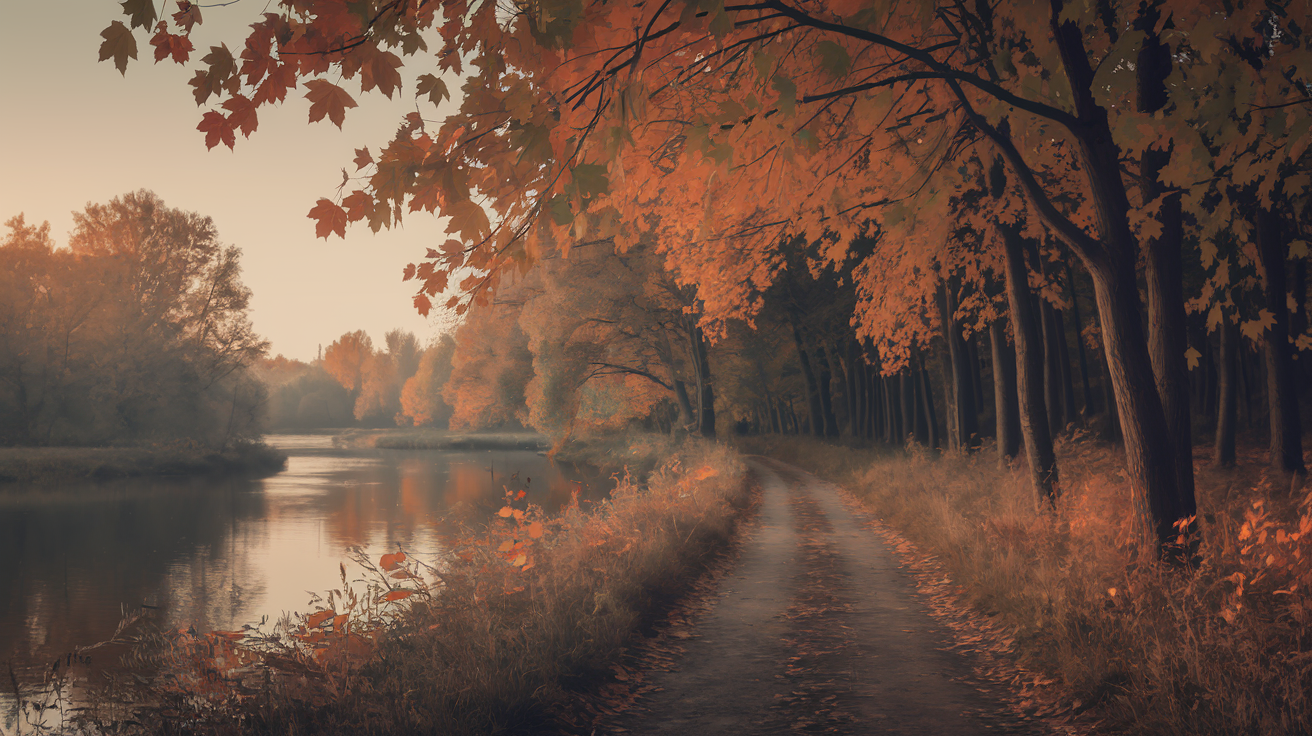
A soft autumn is a seasonal color palette defined by muted, warm tones and low contrast. Colors seem earthy and hushed, mixing effortlessly to produce a soft, harmonious appearance. Softness and warmth do the heavy lifting here, differentiating this group from the rest of the autumns.
The outcome is a quiet loveliness buoyed by muted, melted tones instead of hard lines.
1. The dominant trait
Softness rules. Colors appear subdued, never vivid or sparkling. Think dusty rose, moss, and weathered terracotta instead of candy pink or emerald.
High contrast shatters the magic. Soft transitions between the tones maintain the face tranquil and luminous. A taupe sweater with olive pants feels softer than harsh black-and-white.
Choose soft finishes that appear a bit hazy, like chalky sage or smoke blue-green. Steer clear of harshly saturated or neon edges.
It's this softness that makes the entire impression friendly and stable. It feels grounded, gentle, and soothing.
2. The secondary trait
Warmth comes next as the constant mooring. Some soft autumns have a warm, golden undertone in sun-kissed skin, plus light to medium/dark brown hair with gold, red or subtle auburn highlights.
Select hues accented with warm yellows, browns, olives and peaches instead of cool blues or icy pinks. Even neutrals do better with warmth: ivory over optic white, cocoa over charcoal.
That warmth maintains the natural radiance and unites skin, eyes and hair. When the base is warm, makeup and clothes sit with less effort.
3. The overall vibe
Picture late summer sliding into early autumn: soft light, dry grass, and mellow shade. The palette is warm and welcoming, never weighty.
Mix natural shades for effortless sophistication—olive and camel, dusty coral and mushroom, muted teal and warm denim. It appears effortlessly chic.
Clothing and makeup tend towards mild and elegant. Sheer peach blush, soft brown liner and satin finishes work better than matte extremes or glitter.
Avoid high decibel drama. Go for those understated pieces that say something in a whisper rather than a shout.
4. The color dimensions
Values range from medium-light to medium-dark, steering clear of both ends of the scale. This is the lightest Autumn branch, but still in the medium to dark value range overall.
Chroma remains low. Too vibrant or neon colors clash against muted characteristics, which typically manifest in skin, eyes and hair as a soft, desaturated undertone.
Balance matters: warm undertones meet gentle, dulled hues. Use soft browns, olives, peaches, muted greens and warm denim to create depth without hard lines.
Black is usually too harsh. Deep brown or navy denim gets the job done. Ivory replaces white.
5. The common misconception
Not every autumn is deep and rich; soft autumn blooms in the washed out, lighter end of the medium to dark spectrum. It isn't a 'lighter true autumn' because chroma—its softness—is the defining key, not just depth.
Soft autumn is commonly confused with soft summer. The difference is warmth: soft autumn stays warm, with golden skin that may look gently tanned, eye patterns with olive casts and brown specks, and hair rooted in brown with warm highlights.
Colors that are too dark or cool will pull the face down. Warm olives, tawny browns, russet and dusty peach ring in harmony instead.
The soft autumn colors
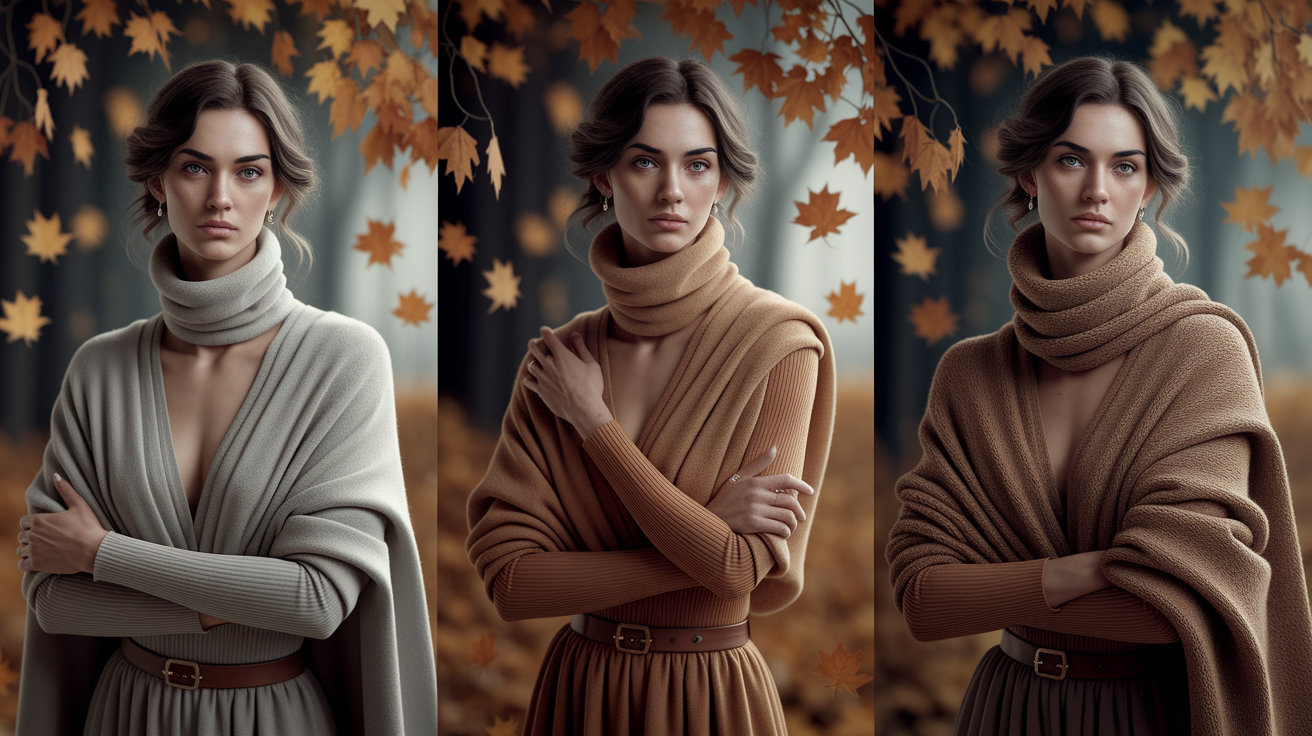
Soft autumn basks in warm, muted earth. Colors look sun-bleached and merged, like leaves after a shower. The palette is earthy and cozy, with olive greens, warm browns, warm beige and warm gray as anchors.
Think moss, clay, wheat and soft gold light. Most of this palette have warm, golden undertones to their skin so soft warmth keeps the face looking clear and calm. When in doubt, go with the color that looks like it's got a little brown in it.
Visual list idea for quick grabs:
- Core: warm taupe, camel, mushroom, eucalyptus gray, olive, moss, chestnut, soft gold
- Support: dusty cedar, marsala, brick red, tea rose, pistachio, lavender (warm), wheat, oatmeal
- Lights: cream, warm ivory, light camel, honey beige
- Darks: espresso brown, deep olive, charcoal-brown (not pure black)
Your core neutrals
Opt for warm grays that lean toward khaki, brown-based taupes, soft browns ranging from mushroom to chestnut, and muted olives. These neutrals meld with soft autumn skin and hair so outfits become one, not disparate pieces.
Leave behind stark black and white. They spike contrast and can render soft skin sallow or shadowed. Choose warm ivory instead of white, choose charcoal-brown instead of black. The swap alone can soften the entire appearance.
Throw in soft beige and camel for your coats, knitwear, shoes. Camel belts, tan loafers and oatmeal scarves unite cool and warm pieces without a brawl.
Build a capsule with: mushroom trousers, olive chinos, camel coat, warm gray sweater, chestnut boots, cream tee, and eucalyptus-gray shirt. Each piece coordinates with the others, so packing remains easy.
Your best colors
Think soft peach, muted terracotta, warm sage and dusty rose. These hues complement the sunlit-diffusion quality of the palette and highlight the face without shine.
Most soft autumn faces light up with earth-kissed pinks: blushy earth rose, grainy brick pink, tea rose. They do go great as cheek and lip tones!
Go-to list for skin, eyes, hair harmony:
- Sage, olive, pistachio
- Peach, dusty rose, tea rose
- Terracotta, brick, marsala
- Warm gray, eucalyptus, mushroom
Greys should be browned or mossy, not cool or blue. That nuance maintains the warmth and groundedness of the set.
Your accent shades
Do accents of soft turquoise, gentle coral, warm mustard and muted teal. They provide intrigue but maintain a laid back cohesiveness to the scene.
Limit neon and high-chroma brights. If you attempt one, mute it with camel or warm gray to soften the edge.
Layer accents around the face with caution. A tea rose scarf with a camel coat, or a mustard bag against olive, provides depth without clamoring.
Rotate accents by season: coral and tea rose in warmer months, marsala, brick and muted teal in cooler ones. Little swaps keep the palette fresh with the base remaining steady.
The ideal soft autumn hair color
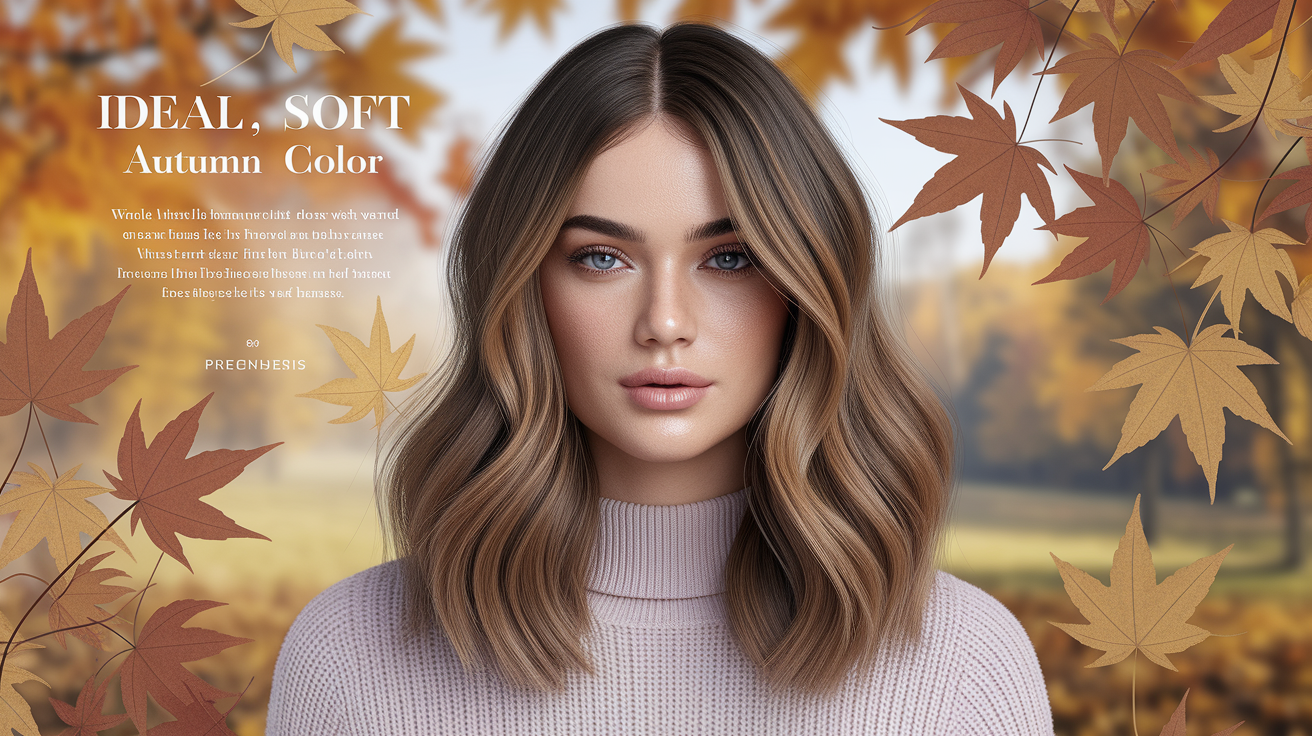
Soft Autumn hair works best with warm, muted hues that echo the palette: think soft golden brown, cinnamon, camel, and caramel. The aim is a toned, neither too light or dark shade with soft golden undertones and subtle low chroma.
Too ashy or cool tones can mute the skin's warmth and loud, bright colors break harmony. A slight change in lightness alters contrast, therefore schedule a little step up or down from your foundation.
Soft Autumn blondes are warmer and softer than Spring or Summer blondes, with more beige honey than lemon or ash. Highlights and lowlights should merge and maintain edges diffused, so the entire appearance remains cohesive.
Enhancing your base
Begin by reading your natural undertone—neutral to golden is common in Soft Autumn—then accentuate it with warm soft browns like light chestnut, toasted almond, or cinnamon brown.
Soft auburns with softened copper are ideal if your base drags red, but keep saturation down. Avoid wild leaps. Go one or two levels lighter or darker, to maintain the soft contrast that defines the season.
A mid-brown pushed to light golden brown, or dark blonde leaned to beige honey, tend to hit the magic point. Ask for techniques that mimic sun, not stripes: teasylights, babylights, or a soft balayage that melts at the root.
No harsh foils or bulky chunks. Care keeps the style fresh. Use gold or neutral-warm glosses to add shine without additional depth and select mild shampoos so the finish remains soft.
Exploring highlights
Opt for caramel, honey, butterscotch, or wheat in your highlights. They provide depth without shine and complement the palette's warm, subdued chroma.
Keep placement subtle and blended. Thin ribbons, painted mid-lengths, and diffused ends eschew hard lines and keep high-contrast blocks at bay. Test out some face-framers one tone lighter than your natural colour in warm beige or soft gold.
It illuminates eyes and skin without overshadowing. Bring it back to the palette. If your closet favors olive, camel, and warm taupe, mirror those sentiments in your hair with golden-beige highlights instead of harsh blondes.
Shades to reconsider
Jet black, blue-black, and platinum blonde squash Soft Autumn warmth and amp contrast too high. Cool ash browns or grays tend to read dull against golden undertones.
Vibrant reds—fire engine, cherry—and deep purples drown out the gentle complexion and make hair the sole focus. Super light, icy colors fade the face, particularly in dim light.
Even "mushroom" tones lean cool-ashy and can appear dusty instead of soft. Stick to warm, muted colors within the larger Soft Autumn palette.
Than Soft Summer you require more warmth and gold. Than Spring, you need less brightness and more restraint.
Building your wardrobe
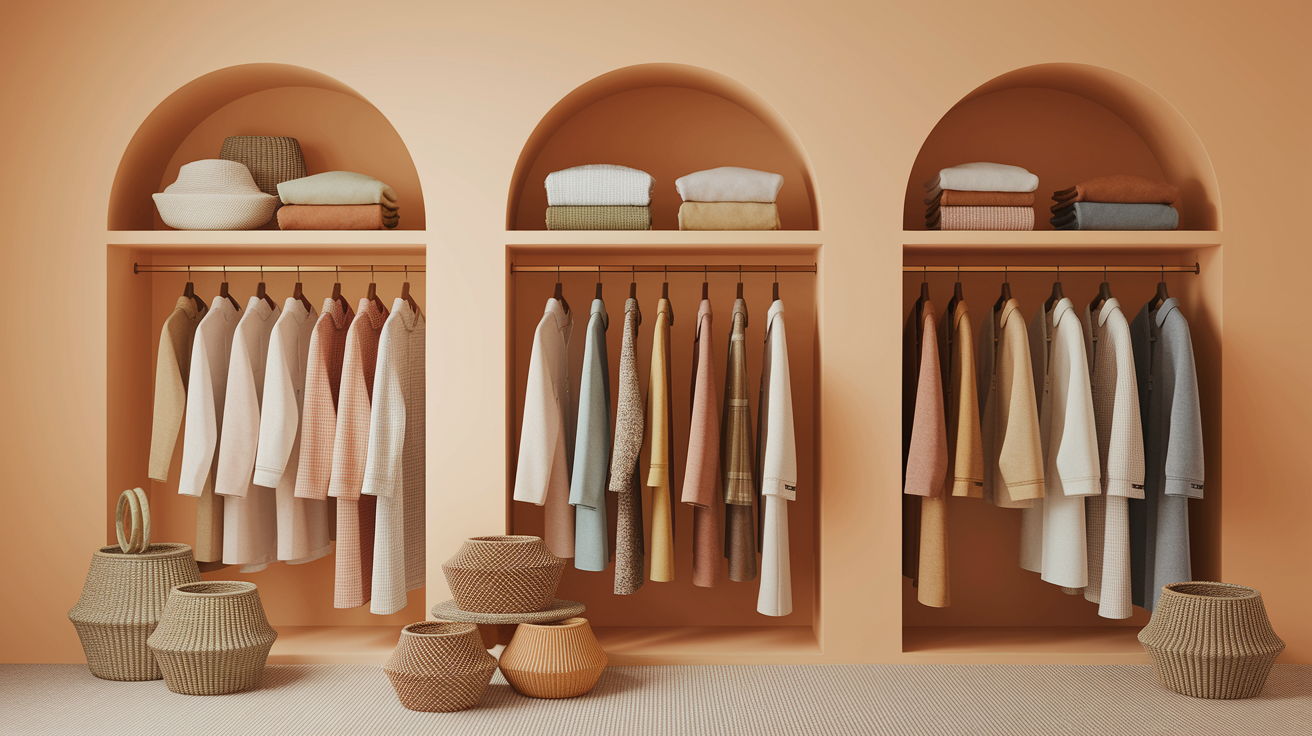
Take the soft autumn color palette as your reliable bedrock throughout the year. Aim for approximately 80% perfect colors in your closet and 20% for personality or special occasions. Core shades like warm olives, moss, muted teal, soft mustard, terracotta, camel, oat, and chocolate intermingle effortlessly across seasons, from linen in the heat to brushed wool in the cold.
Skin for Soft Autumn can be fair to tan with warm, golden, or peachy undertones, so adhere to warm, muted hues that mimic that delicate depth. To enhance your soft autumn beauty, sort by color family to style faster. Cluster warm browns together, then greens, then rusts and corals, leaving a small area for heavier accents like mahogany or gentle aubergine.
Maintain consistency with metals—brushed gold, bronze, or antique brass—for jewelry and hardware on bags, belts, zips and buttons. That little touch keeps ensembles cohesive without trying. Build with timeless items first. Picture camel trench, olive field jacket, oat cardigan, chocolate trousers, moss chinos, muted teal blouse, rust tee and a soft cream knit.
Pop with accent layers in soft mustard or dusty coral. If you adore brighter shades, opt for warmer-leaning versions such as burnt apricot or sun-warmed turquoise. Hair color tips the scales, so consult a professional to prevent shocking your contrast.
The fabric philosophy
Select matte or lightly textured fabrics that capture soft light, not glare. Cotton twill, brushed flannel, linen, Tencel, bamboo, suede, nubuck, and merino keep the palette's hushed tone draping elegantly. Avoid slick synthetics and glassy finishes that battle the soft autumn vibe.
High-shine satin, stark polyester, wet-look leather and hard black hardware can look harsh under warm skin. Natural fibers breathe and they move and they age beautifully. They soften with age, which complements natural hues. A moss linen shirt, a camel cashmere scarf or a sienna suede loafer all mellow a look.
Comfort counts. Opt for mid-weight layers you can stack when the air chills, then shed in heat. Soft knits, smooth linings, and room to move keep the style lived-in yet polished.
The pattern principle
Opt for patterns with softened edges and low-contrast. Watercolor checks, blurred stripes, herringbone, tone-on-tone florals and small leaf prints sit well with warm browns and greens. Save stark black-white, crisp chevrons or neon graphics. They overwhelm muted coloring and disrupt balance.
Maintain scale small to medium. Little sprigs on a blouse, a subtle plaid on trousers, or thin ikat scarf brings dimension without din. Ground prints with solid neutrals.
Your investment pieces
Spend on classic outerwear, knitwear and tailored staples in camel, chocolate, olive and oat. Quality reads in secure seams, sleek linings, and tough hardware. Opt for timeless cuts—a single-breasted car coat, straight-leg pants, a crewneck jumper, a column skirt—that complement warm undertones.
Build a capsule that pairs easily with accents: oat sweater + moss pants + rust scarf, or camel coat over muted teal dress with bronze buckle. Wove in your style — workwear, romantic, minimalist — so the capsule felt like you, not a rulebook.
Makeup and accessories
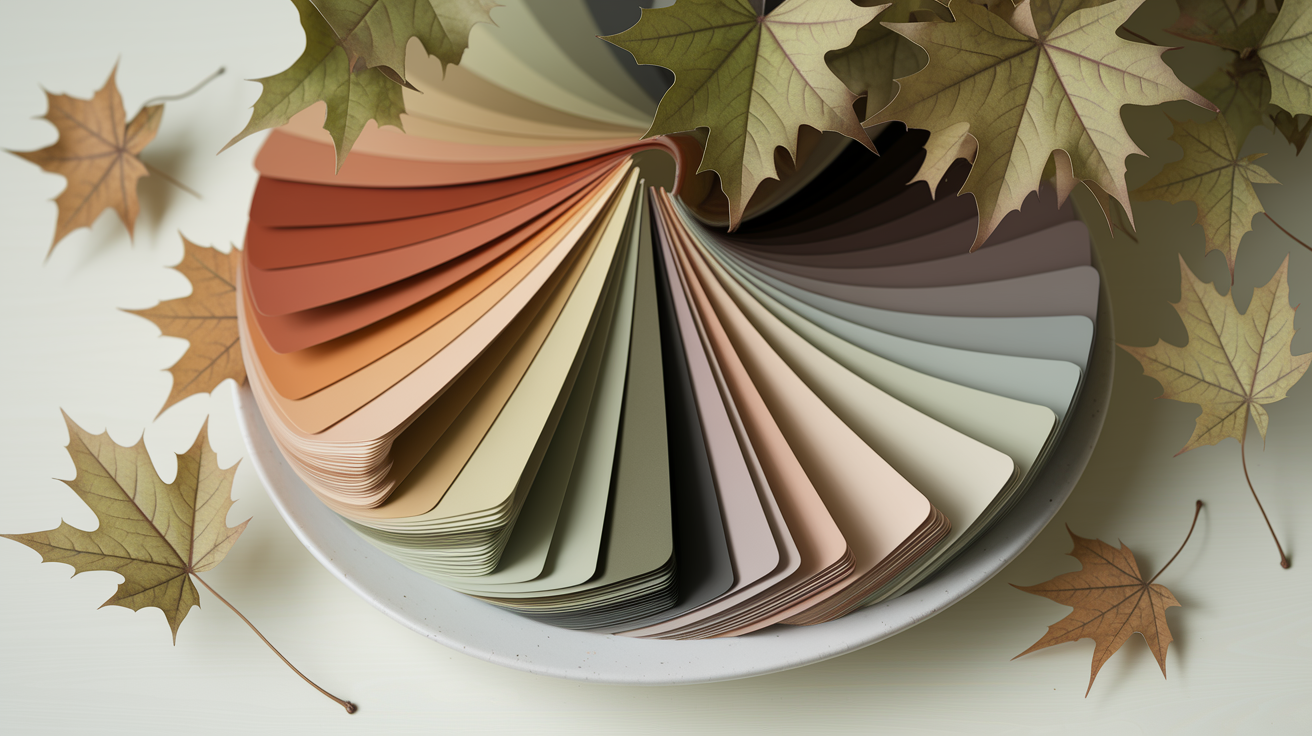
Soft autumn lives for warm, muted colors that define the soft autumn color palette. Aim for soft depth, fuzzy edges, and low contrast to enhance the overall appearance. Accessories and makeup should resonate with earthy tones—olive, warm beige, clay—to maintain a serene and sophisticated soft autumn beauty.
Your face palette
Warm blush breathes life sans din. Opt for peach, apricot or a pinkish rose that mimics a natural flush. A gentle bronzer in warm beige or light caramel defines – put it wherever the sun would hit.
Lips do best in brown-based tones—cinnamon, warm blush, gentle russet—that hug the natural lip line and read polished, not painted. Eyeshadow although earth sits. For depth use olive, taupe, soft gold, raw sienna, or smoky bronze, sepia or muted copper.
Dusky espresso at the lash line can crisp the gaze without severe angles. Pass on frosty charcoals, cold taupes and bright jewel tones that battle the skin's heat. Keep finishes matte or satin for a hushed, skin-like effect. High-shine can appear harsh against this palette.
For neutrals, reach for clay tones: umber, sienna, brick dust, faded terra cotta, and peat. These shades bridge cheeks, lips and eyes effortlessly.
- Foundation: warm beige, warm sand, soft olive undertones
- Blush: peach, apricot, warm rose
- Bronzer/contour: light caramel, soft toffee (matte)
- Eyeshadow: olive, taupe, soft gold, sepia, smoky bronze, muted copper
- Eyeliner: espresso, warm brown, moss
- Lipstick: cinnamon, warm blush, gentle russet, muted peach
- Highlighter: soft champagne (satin, no sparkle)
Your jewelry metals
These warm metals just intensify that soft autumn glow. Gold, bronze, copper and brass seem to sit best near the face, particularly in matte or brushed finishes that don't glare. Silver and white gold tend to read too cool and can wash out skin.
If you adore them, style them away from the face or mix with mixed-metal pieces that lean warm. Match metal to outfit temperature. Match olive knits with brushed brass hoops, or a peat dress with a slim copper cuff.
Echo warmth in makeup—cinnamon lip + bronze earring—to leash the line from face to collar.
Your finishing touches
Accessories complete the narrative and anchor the color scheme. Play up scarves, hats and bags in accent shades such as olive, warm gray, smoky teal, mustard, russet and soft gold. These accents elevate plain jane looks and stay in balance with natural foundations.
Trust the natural texture. Leather, suede, wool, linen, wood and rattan all just feel right with muted color. Tortoiseshell frames or wooden earrings contribute warmth without sparkle.
Flip by season. For cooler months, go for peat and umber scarves with bronze hardware. For summertime, pair with sun-bleached terra cotta sandals and a leather-trimmed straw bag.
- Scarves: olive, brick dust, sienna, warm gray
- Hats: camel felt, olive wool, taupe linen
- Bags: tan leather, russet suede, peat crossbody
- Eyewear: tortoiseshell, matte bronze, wood-accent frames
- Belts/shoes: cognac, tobacco, muted olive; matte buckles
Beyond the basics
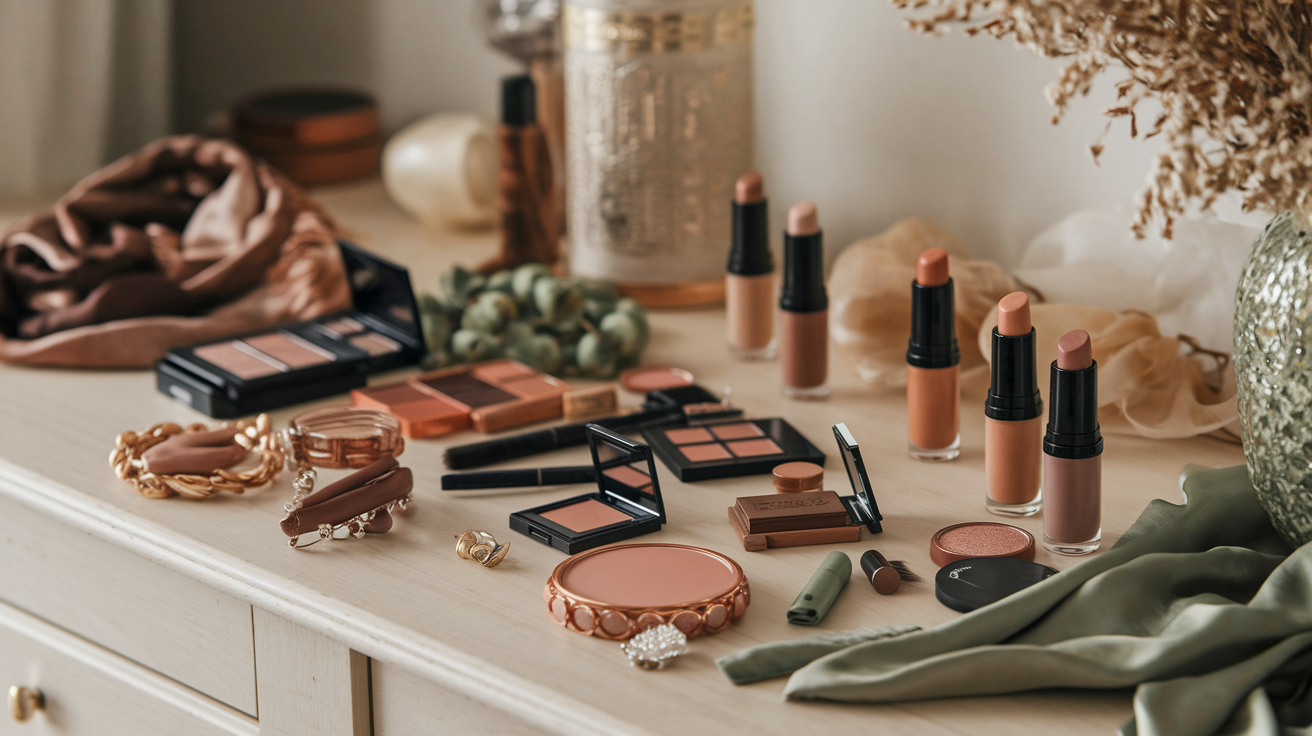
Soft Autumn really sparkles when you narrow selections down past color charts. The palette is muted, warm and mid-depth but has that natural feel reminiscent of fallen leaves. Construct a solid foundation of staples and one foundational shape, then pile on texture and pattern and subtle tonal shifts for dimension.
Save 80% of your wardrobe for the perfect colors, reserve 20% for mood/travel/special events, and edit every season.
The seasonal flow
Soft Autumn falls in the middle of Soft Summer and Warm Autumn, creating a beautiful soft autumn color palette. Imagine a slow melt from creamy cool to molten golden warmth. If you have soft brown or dark blonde hair highlighted with golden threads, hazel or green eyes flecked with warmth, and warm skin that's peachy, golden, or olive-tinted, then chances are you live in this zone of soft autumn beauty.
As the seasons change, season the fabrics before the colors. Early fall: linen-cotton shirt in moss, light denim, sand loafers. Late fall: brushed twill in umber, olive cord, caramel boots. Makeup can slide from muted rose-brown to toffee-nude, and from misty taupe eyeshadow to warm khaki, all fitting within the soft autumn spectrum.
Sister palettes come in handy if you want some variety. Borrow the softest tones from Soft Summer (mushroom, foggy mauve) on warm days, or the lightest, least intense hues from Warm Autumn (camel, wheat) in colder months. Keep contrast low so that the Soft Autumn harmony is not disrupted.
A seasonal flow chart is a handy check. Place Soft Autumn between Soft Summer and Warm Autumn, then map your safe zone: muted, warm, medium depth. When in doubt, inquire if a color resides in that box, making sure it aligns with your soft autumn coloring.
The common mistakes
Defaulting to textbook fall shades that are too deep or vibrant makes the face appear sapped. Neon coral, bone black, frost and high contrast combinations tend to be the standard suspects.
Texture and finish are key. Harsh gloss, stiff synthetics and sharp sheens combat the soft vibe. Choose sueded leather, brushed flannel, matte knits, slub cotton.
Disregard hip renditions at your peril. Olive, not pine green, peach, not bubblegum, warm taupe, not icy greige. Undertone rocks.
Trends are okay if chopped. If a bold shade tempts you, downshift it: choose a muted version, place it far from the face, or use it in a small accessory.
The personal touch
Lock in 3-5 signature shades that light you up–olive drab, cinnamon, dusty teal, warm taupe, soft terracotta–and build base layers, mid-layers and top layers you can interchange on repeat.
Patterns such as washed-out plaid, muted paisley and tonal animal prints provide intrigue without clutter. Mix colors to suit your vibe. Olive with cinnamon, jams and petit fours! Dusty teal + camel feels fresh. Warm taupe with terracotta feels polished.
Intertwine significance with heirloom gold, a patina belt or a handwoven scarf of muted spice. They ground fashion and endure seasons.
Conclusion
Soft autumn occupies a tranquil place. Low contrast. Warm base. Soft intensity. Think mist at dawn. Sort of leaf mulch after rain, you know? Colors seem to be rich, yet soft. Clothes seem effortless and stylish. Hair comes across as warm and muted. Makeup gives glow, not glare.
To test it out, think small. Trade in stark black for deep olive. Swap out bright red for rust. Try a peach blush. Layer on a soft gold hoop. A toasty brown satchel. Notice how your skin appears in the gentle light. Grab a quick shot in front of a window. See how your eyes pop.
Style builds with little victories. Retain what compliments Jump over what battles your tone. Need more aid?) Leave your favorite shade or a selfie shoutout. I'll post a few quick selections for you.
Frequently Asked Questions
How do I know if I'm a Soft Autumn?
You probably have muted, warm coloring and low to medium contrast, characteristic of the soft autumn color palette. Your skin, hair, and eyes blend together softly, creating a natural appearance. Gold jewelry enhances your look better than silver, affirming that soft autumn beauty might be your ideal match!
What colors look best on Soft Autumns?
Soft, warm, and earthy tones define the soft autumn color palette. Imagine soft olive, warm taupe, camel, terracotta, dusty teal, and gentle peach. Say no to harsh black and white; instead, embrace creamy ivory, cocoa, and moss to enhance your natural beauty.
What is the ideal Soft Autumn hair color?
Soft, warm, dusty shades are essential in the soft autumn color palette. Opt for warm caramel, light chestnut, soft copper, golden brown, or dark honey blonde. Avoid ashy or excessively cool shades to maintain a natural appearance and preserve your soft autumn beauty.
How should a Soft Autumn build a wardrobe?
Start with warm neutrals like camel, cocoa, olive, and cream, which are essential in a soft autumn color palette. Add muted accent colors such as rust, sage, and dusty teal to enhance the overall appearance. Opt for matte or soft textures, avoiding harsh contrast to maintain a natural look.
What makeup suits a Soft Autumn best?
Choose soft autumn colors like warm, muted shades. Use a warm undertone foundation, peachy or apricot blushes, and soft brown or olive eye shadows, complemented by warm brown eyeliners. Opt for lipsticks in terracotta or peachy nude for a natural look.
Which accessories complement Soft Autumns?
Gold, bronze, and copper jewelry complement the soft autumn color palette beautifully. Leather in tan or cognac pairs perfectly with warm hues, while scarves in moss, rust, or dusty teal enhance the overall appearance. Opt for warm soft metals and earthy colors to maintain a natural look.
Can Soft Autumn wear black and white?
YES, with tweaks. Trade in bright white for cream or ivory to create a soft autumn color palette. Soften black with charcoal, cocoa, or deep olive, and if you wear black, distance it from your face or accessorize with warm hues like a scarf or lipstick for a natural look.